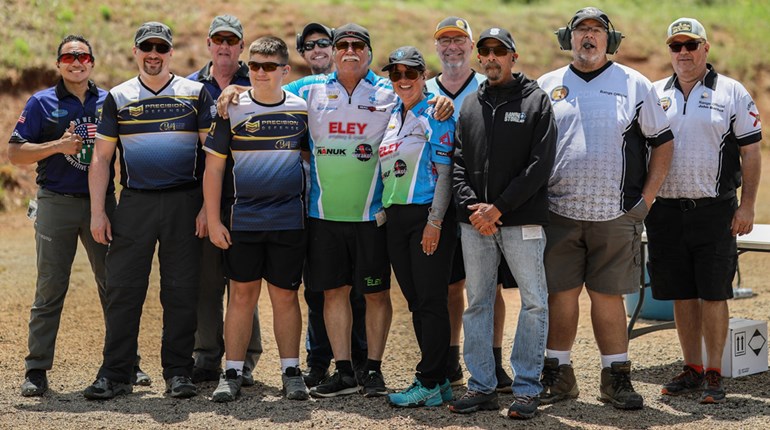** When you buy products through the links on our site, we may earn a commission that supports NRA's mission to protect, preserve and defend the Second Amendment. **
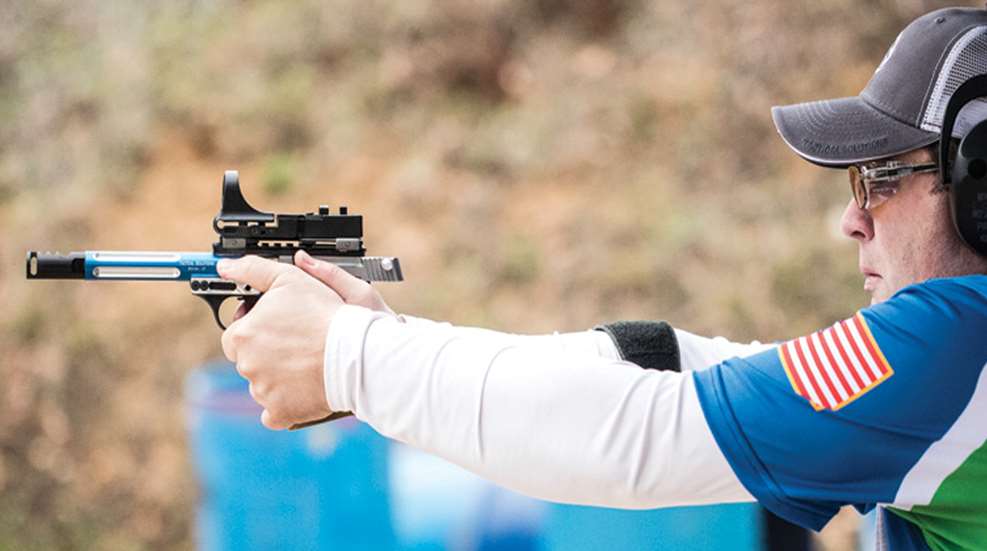
I get a lot of questions about the Steel Challenge Shooting Association (SCSA) Classification System. My intention is to try to simplify the Steel Challenge Classification System and answer any questions you may have. The full classification policy is listed below.
Although similar to the USPSA classification system in concept, the Steel Challenge classification system is independent of the USPSA classification system and has its own policies, as follows:
1. Only stages that bear "SC" numbers (SC-101, SC-102, etc.) are used for classification.
2. A minimum of four stages per division are required for classification.
3. Stages will not be included in the classification calculation until the activity fee for that match has been paid by the club hosting the match.
4. If you have shot a stage more than once, your best stage time will count.
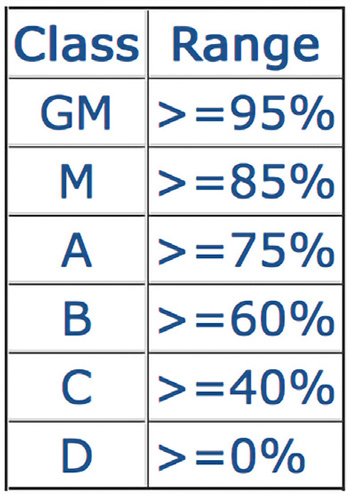
5. A stage time is the aggregate time for the stage from a match (total of the best four of five, or three of four, times for the stage in a match).
6. Only stages shot in the current or previous two calendar years are used for classification. All classifiers are included in the initial classification run on July 4, 2016, without regard to the two calendar year limit. This was done so that competitors who had a high score from a match more than two calendar years ago, and before this classification system was released, would get the classification those scores earned.
7. Your classification percentage can go down; however, once you earn a classification (A, B, etc.) it will not go down.
8. Stages that have been assigned a default of 30 seconds per string (120 seconds on a 5-string stage, 90 on a 4-string stage) are considered DNFs and are not included in your classification calculation.
9. Your classification percentage is calculated as follows:
10. USPSA headquarters cannot process manual corrections to scores. If a score or division is incorrect, contact the match director and request corrected scores be uploaded. If a score cannot be corrected, USPSA staff can mark it "invalid" (not to be used in classification)
11. Classifications are calculated early Wednesday morning on a weekly basis. This time was chosen to minimize the chances of a classification changing during a match.
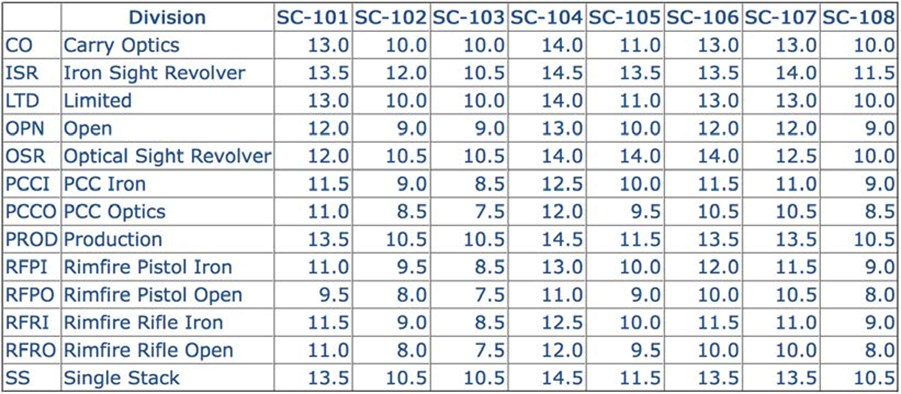
Common Questions
Q: Do I have to be a member of USPSA to be classified?
A: Yes. You need to have a USPSA number for you to be classified.
Q: If I am classified in USPSA as an A Class, what is my classification in SCSA?
A: Your classification in USPSA has no bearing on your classification in SCSA or vice versa.
Q: Do I need to be a member of USPSA to participate in a Level II match or higher?
A: Yes. You need to be a member to participate in these events. At this time, Level I matches do not require you to be a USPSA member, but it is highly encouraged. As of January 2019, Level II matches or higher will require membership.
Q: What is your opinion of the benefit of the Steel Challenge Classification System?
A: There are two main benefits of the classification system. One, you can track your performance as a shooter; this helps in goal setting and the self-motivation process. Two, if the required number of entries is reached for recognition at Steel Challenge Matches there will be awards given.
Tier 1 (club) – minimum of three, but I don’t know of anyone who gives out awards at club matches.
Tier 2 (state) – minimum of five is recommended, but Match Director can use any schedule he wants.
Tier 3 (area or higher) – 10 or more per class.
Q: What is a category, division, classification?
A: A division is the type of equipment\ used in a match; i.e., Single Stack is a 1911-style gun with a set guidelines of magazine capacity, holster location etc. A Classification is the level of proficiency achieved in a division; GM (Grand Master) is the highest level of classification. Category is meant for special recognition such as “Junior” where competitors are under the age of 18.
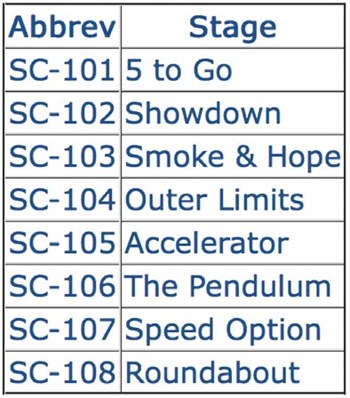
Q: How many stages do I need to shoot in order to be classified?
A: Four stages need to be shot at a SCSA (Steel Challenge Shooting Association) affiliated event. Note: all eight current Steel Challenge stages are "classifiers" at affiliated match events.
Q: Why haven’t I seen the scores posted for my classification updated?
A: The classification system is updated once a week on Wednesday at 8 a.m. EST. If you shot a match on Saturday and it is Tuesday, you need to be patient and wait a day. If it is the Wednesday after the match and you still have not seen your times updated, contact the match director. Some common setbacks include that payment to SCSA has not been made for the scores to be posted. If you see 0/0/00 by the match, that means the activity fee hasn’t been paid yet and those results won’t be used for classification until they are.
Q: When do peak times change?
A: At a minimum, the peak times are reviewed and evaluated once a year. If a change needs to be made, there is no current limitation on when these changes can be made. The initial classification system was implemented on July 4, 2016 and there have been two updates to peak times for certain divisions. These updates are made typically after the World Speed Shooting Championship.
Q: I still don’t understand the math for classification, can you explain it to me?
A: Let us use an example and we will assume this is our first match and we are not classified. We are going to focus on PCCO this year. Here is a breakdown for all stages, classifications, and Classification times for each Classification, for PCCO; I shot my local SCSA match and they are affiliated with USPSA. My times are as follows:

There are two different ways to look at classification: 1) what is my classification on a stage, and 2) what is my total classification for the division? In the First Example, in order to find your classification on a stage you take your Peak Time for the division and Stage and divide it by the time you shot. In our example, you would take your time for Five to Go (12.15) and divide it by the Peak Time for the division and stage (11.00) to get your classification percentage, which would be (12.15/11.00), or 90.53 percent. This classification percentage between 85 percent and less than 95 percent is MASTER classification.
Here is a Pro Tip—the stages that you have a lower classification on are the ones you should practice.

In order to determine your total classification, you take the sum of all of the times you shot and divide by the peak time for the stages. In our example, the total Peak time for the six stages shot is 59 seconds as illustrated above. The total times I shot for the six stages in the match is 63.08 seconds. My classification for this match is (59.00/63.08), or 93.53 percent. This is between 85 percent and less than 95 percent, or MASTER classification. After you shoot your next match, your classification will update and keep the lowest time for every stage of each match for classification purposes.
The Peak Time is 78 seconds. My total time for my best stages shot in competition is 64.38 seconds, which is GM time. In theory, if I shot my personal best times all in one match it would be a 64.38. As a point of reference, my best total match time with PCCO was 67.59. You can find your classifications at the following link: https://steelchallenge.com/steelchallenge-classification.php.
Q: I am a Master in RFRO, how do I know how much time I need to take off my classification times to become a Grand Master?
A: After looking at your classification you need to drop 1.56 seconds!
In order for you to be a GM, you have to shoot 95 percent or greater of the peak time. The peak time is 76 seconds. 95 percent of 76 is actually (76*(1+(1-.95)) or 79.8 seconds for a GM time. This means you need to drop 81.36 (current classification time)—GM time 79.8, or 1.56 seconds somewhere and you will be a Grand Master.
Article from the July/August 2018 issue of USPSA’s FrontSight magazine.
Although similar to the USPSA classification system in concept, the Steel Challenge classification system is independent of the USPSA classification system and has its own policies, as follows:
1. Only stages that bear "SC" numbers (SC-101, SC-102, etc.) are used for classification.
2. A minimum of four stages per division are required for classification.
3. Stages will not be included in the classification calculation until the activity fee for that match has been paid by the club hosting the match.
4. If you have shot a stage more than once, your best stage time will count.

5. A stage time is the aggregate time for the stage from a match (total of the best four of five, or three of four, times for the stage in a match).
6. Only stages shot in the current or previous two calendar years are used for classification. All classifiers are included in the initial classification run on July 4, 2016, without regard to the two calendar year limit. This was done so that competitors who had a high score from a match more than two calendar years ago, and before this classification system was released, would get the classification those scores earned.
7. Your classification percentage can go down; however, once you earn a classification (A, B, etc.) it will not go down.
8. Stages that have been assigned a default of 30 seconds per string (120 seconds on a 5-string stage, 90 on a 4-string stage) are considered DNFs and are not included in your classification calculation.
9. Your classification percentage is calculated as follows:
- Your total time for all classifier stages that you shot is added up
- The total "peak times" for the stages you shot is added up
- Your percentage is defined as total_peak_time/total_stage_time
- Your percentage is mapped to a classification
10. USPSA headquarters cannot process manual corrections to scores. If a score or division is incorrect, contact the match director and request corrected scores be uploaded. If a score cannot be corrected, USPSA staff can mark it "invalid" (not to be used in classification)
11. Classifications are calculated early Wednesday morning on a weekly basis. This time was chosen to minimize the chances of a classification changing during a match.

Common Questions
Q: Do I have to be a member of USPSA to be classified?
A: Yes. You need to have a USPSA number for you to be classified.
Q: If I am classified in USPSA as an A Class, what is my classification in SCSA?
A: Your classification in USPSA has no bearing on your classification in SCSA or vice versa.
Q: Do I need to be a member of USPSA to participate in a Level II match or higher?
A: Yes. You need to be a member to participate in these events. At this time, Level I matches do not require you to be a USPSA member, but it is highly encouraged. As of January 2019, Level II matches or higher will require membership.
Q: What is your opinion of the benefit of the Steel Challenge Classification System?
A: There are two main benefits of the classification system. One, you can track your performance as a shooter; this helps in goal setting and the self-motivation process. Two, if the required number of entries is reached for recognition at Steel Challenge Matches there will be awards given.
Tier 1 (club) – minimum of three, but I don’t know of anyone who gives out awards at club matches.
Tier 2 (state) – minimum of five is recommended, but Match Director can use any schedule he wants.
Tier 3 (area or higher) – 10 or more per class.
Q: What is a category, division, classification?
A: A division is the type of equipment\ used in a match; i.e., Single Stack is a 1911-style gun with a set guidelines of magazine capacity, holster location etc. A Classification is the level of proficiency achieved in a division; GM (Grand Master) is the highest level of classification. Category is meant for special recognition such as “Junior” where competitors are under the age of 18.

Q: How many stages do I need to shoot in order to be classified?
A: Four stages need to be shot at a SCSA (Steel Challenge Shooting Association) affiliated event. Note: all eight current Steel Challenge stages are "classifiers" at affiliated match events.
Q: Why haven’t I seen the scores posted for my classification updated?
A: The classification system is updated once a week on Wednesday at 8 a.m. EST. If you shot a match on Saturday and it is Tuesday, you need to be patient and wait a day. If it is the Wednesday after the match and you still have not seen your times updated, contact the match director. Some common setbacks include that payment to SCSA has not been made for the scores to be posted. If you see 0/0/00 by the match, that means the activity fee hasn’t been paid yet and those results won’t be used for classification until they are.
Q: When do peak times change?
A: At a minimum, the peak times are reviewed and evaluated once a year. If a change needs to be made, there is no current limitation on when these changes can be made. The initial classification system was implemented on July 4, 2016 and there have been two updates to peak times for certain divisions. These updates are made typically after the World Speed Shooting Championship.
Q: I still don’t understand the math for classification, can you explain it to me?
A: Let us use an example and we will assume this is our first match and we are not classified. We are going to focus on PCCO this year. Here is a breakdown for all stages, classifications, and Classification times for each Classification, for PCCO; I shot my local SCSA match and they are affiliated with USPSA. My times are as follows:
- Five to Go = 12.15 seconds
- Smoke and Hope = 8.02 seconds
- Outer Limits = 14 seconds
- Accelerator = 9.25 seconds
- The Pendulum = 10.54 seconds
- Roundabout = 9.12 seconds

There are two different ways to look at classification: 1) what is my classification on a stage, and 2) what is my total classification for the division? In the First Example, in order to find your classification on a stage you take your Peak Time for the division and Stage and divide it by the time you shot. In our example, you would take your time for Five to Go (12.15) and divide it by the Peak Time for the division and stage (11.00) to get your classification percentage, which would be (12.15/11.00), or 90.53 percent. This classification percentage between 85 percent and less than 95 percent is MASTER classification.
Here is a Pro Tip—the stages that you have a lower classification on are the ones you should practice.

In order to determine your total classification, you take the sum of all of the times you shot and divide by the peak time for the stages. In our example, the total Peak time for the six stages shot is 59 seconds as illustrated above. The total times I shot for the six stages in the match is 63.08 seconds. My classification for this match is (59.00/63.08), or 93.53 percent. This is between 85 percent and less than 95 percent, or MASTER classification. After you shoot your next match, your classification will update and keep the lowest time for every stage of each match for classification purposes.
The Peak Time is 78 seconds. My total time for my best stages shot in competition is 64.38 seconds, which is GM time. In theory, if I shot my personal best times all in one match it would be a 64.38. As a point of reference, my best total match time with PCCO was 67.59. You can find your classifications at the following link: https://steelchallenge.com/steelchallenge-classification.php.
Q: I am a Master in RFRO, how do I know how much time I need to take off my classification times to become a Grand Master?
A: After looking at your classification you need to drop 1.56 seconds!
In order for you to be a GM, you have to shoot 95 percent or greater of the peak time. The peak time is 76 seconds. 95 percent of 76 is actually (76*(1+(1-.95)) or 79.8 seconds for a GM time. This means you need to drop 81.36 (current classification time)—GM time 79.8, or 1.56 seconds somewhere and you will be a Grand Master.
Article from the July/August 2018 issue of USPSA’s FrontSight magazine.














